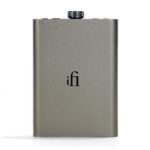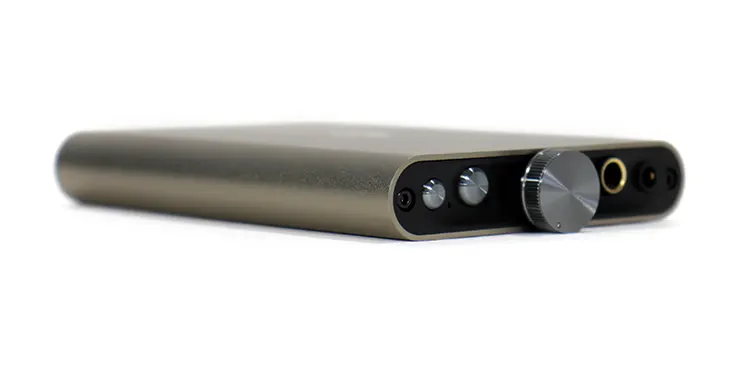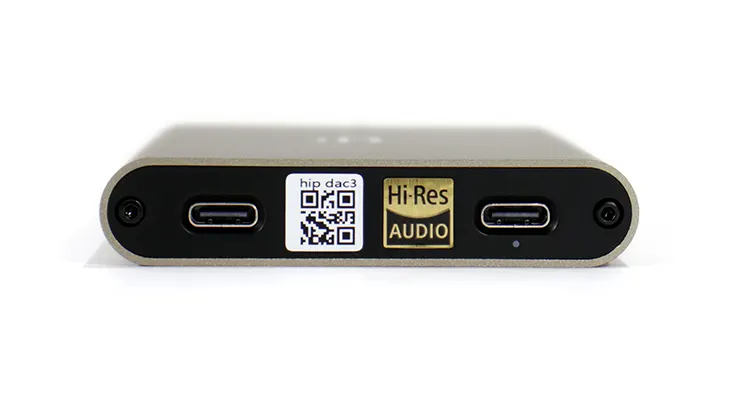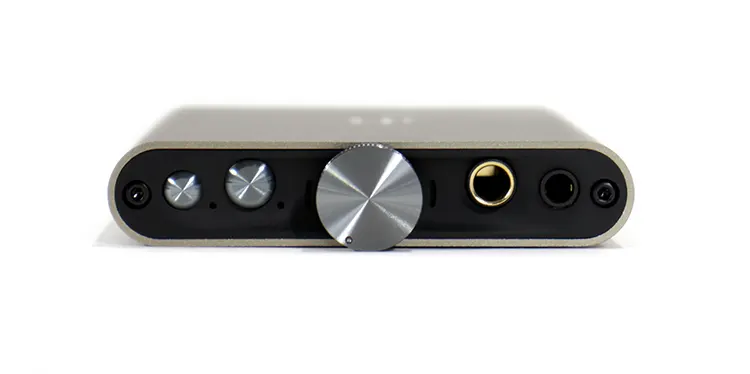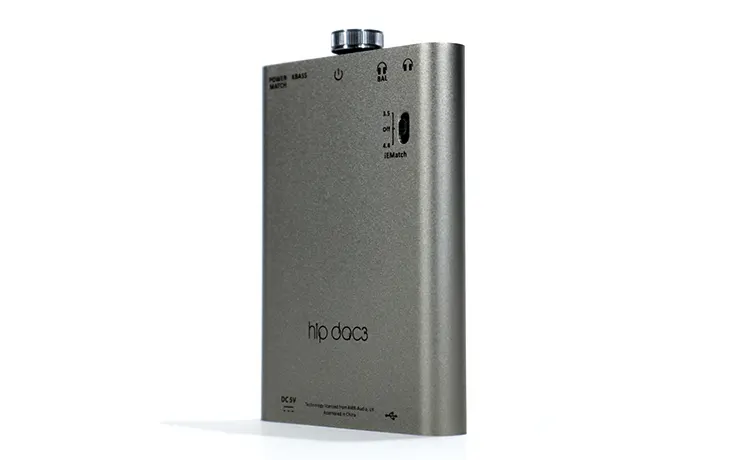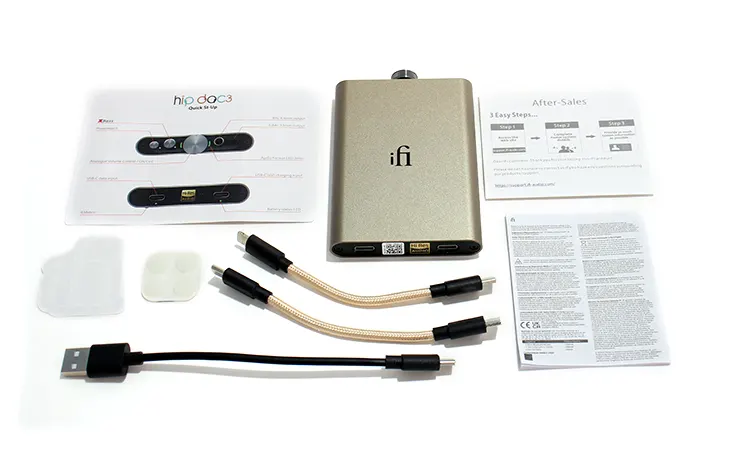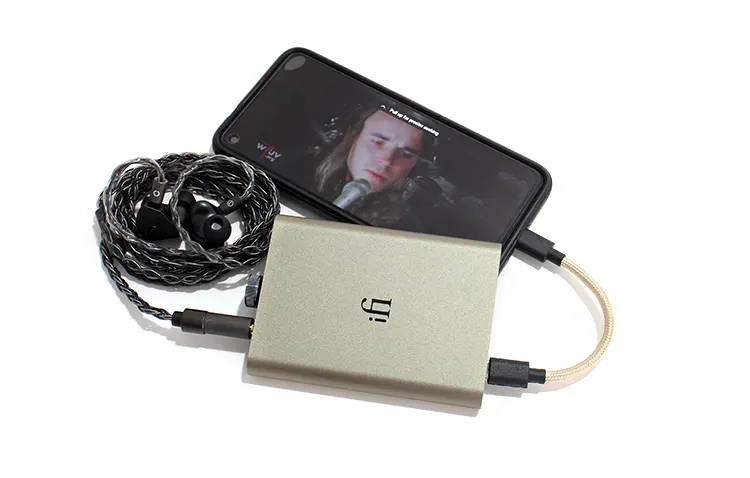In this feature, we review the iFi Audio hip-dac 3, which is a new 3rd generation compact battery-powered portable DAC and headphone amplifier. It is priced at $199 SRP.
Disclaimer: We received this sample in exchange for our honest opinion. Headfonics is an independent website with no affiliate links or services. We thank iFi Audio for their support.
More information about iFi Audio products that we have previously covered on Headfonics can be found here.
Please keep in mind that this post adheres to our most recent scoring guidelines, which you can find here.
When the first iFi Audio hip-dac portable DAC and headphone amplifier was released almost two years ago, it immediately became an often recommended piece of gear amongst the portable audio community.
That wasn’t by accident either as it happens to be one of the top-performing portable DAC amplifiers in its representative tier.
The first version, the blue hip-dac variant was a device capable of producing some high levels of detail, and the hip-dac 2 did even better in that aspect because iFi managed to lower its noise floor.
It seems the hip-dac 3 follows tradition in that it looks to lower that noise floor even further. That’s the hook here and I must say upfront, that I dig the new color scheme more than the previous versions so we’re off to a good start.
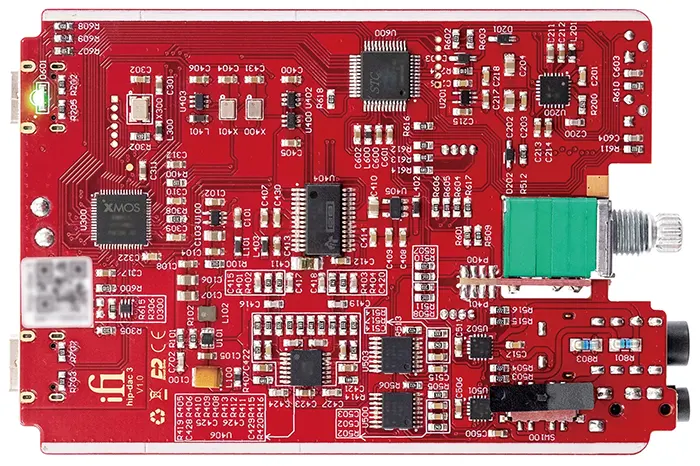
Tech Highlights
Have things changed inside the iFi Audio hip-dac 3? Not much really. The XMOS processor is the same 16-core variant followed up by a Burr Brown DAC that looks similar to the custom DSD1793 chips used on the hip-dac 2. Each version including this one runs the same firmware to denote how similar they are.
If you look at both units’ circuitry, the hip-dac 3 seems to have some rearrangements implemented mostly around the Burr Brown DAC and the output power delivery circuitry. You can also spot some tiny differences around the power input circuitry section.
The rest remains the same. The same upgraded GMT clock remains, along with iFi custom OP amps, TDK COG capacitors, and a high-quality analog rotary volume pod that also powers the unit on and off.
That, along with the iFi Audio XBass which functions at the analog level. XBass reminds me so much of the now-forgotten loudness button that was found on some vintage gear.
It’s probably my favorite low-frequency boost feature. I thought iFi was going to implement the newer XBass 2 here but that’s fine.
Decoding
The hip-dac 3 can play many formats in true native including MQA, bit-perfect DSD plus DXD, and PCM formats. PCM can reach 32bit/384kHz levels, DSD at up to DSD256, with DXD going up to DXD256.
But this all depends on what firmware you have installed because you can opt for one of the available three that excludes MQA. The factory firmware, 7.4 does MQA and so does the GTO filter variant. The firmware that omits MQA altogether is version 7.4b.
I left mine with the stock firmware 7.4 which does MQA. That firmware seems to cover most needs plus to me, it has an edge on sound quality if you’re after a cleaner sonic character overall.
The GTO filter seems warmer but somehow on this model, it reduces the soundstage size and the overall presentation becomes too intimate.
Design
The new skin color is called Titanium Shadow and I like it more so versus the other two older variants. It’s a color scheme that best matches the buttons and rotary knob.
The front-mounted metal knurled knob controls a high-quality analog pod and it seems things are improving with the fabrication of this particular pod because the channel imbalance at the beginning of the volume level is not as bad as on the other older variants.
A trick to use here if you do encounter any channel imbalance and want to minimize the effect is to use the lowest gain setting possible, and the hip-dac 3 comes with plenty of onboard gain adjustability.
There’s not much else to say about the design. The unique flask-shaped design remains and is still made from aluminum and high-quality resin. It’s a sturdy, well-constructed device, and small enough to fit into almost any pocket.
The buttons seemed to have been tightened up as well since they presented no button rattle and sat tightly behind whatever micro switch they activated. So it seems manufacturing tolerances have been improved upon at the factory in a few areas.
I/O
I got quite nostalgic when I realized the jumbo counter sunken connector was gone and in its place was a common USB-C connection.
So now there are two of the same connections on the rear panel. One is for the input and the other is specifically to charge the internal battery which also has an accompanying LED indicator.
They say you don’t know what you have until it’s gone. Well, I miss the robust feel of the old full-sized USB counter sunken connection. Plus I did invest in that style connection and bought dongle adapters and sorts previously, oh well.
By the way, the battery isolation is done purposely because the unit runs on battery power exclusively. That way the circuitry is fed constant, clean power and not power from a step-down circuitry that uses interference-prone circuitry and is prone to introducing noise and artifacts into the main circuitry.
The rest of the IO consists of two headphone jacks upfront. One is a balanced 4.4mm Pentaconn and the second is a less powerful 3.5mm connector that still manages to cough up 280mW at 32Ω. The balanced side is capable of 400mW per side at the same impedance.
The hip-dac 3 internally runs a balanced topology and compliments the 3.5mm single-ended output by implementing their patented S-Balanced system that assimilates a balanced connection which improves crosstalk and lowers distortion.
The feature works best on lower-impedance headphones and IEMs.
PowerMatch + IEMatch
Why would you use two gain implementations on one device? They serve a dual purpose. It seems the Power Match on the hip-dac 3 is set somewhat at a high gain level. The hip-dac 3 Is plenty loud when the feature is off. When the feature is on, it’s full out and turbo speed ahead.
However, IEMatch takes the device in the other direction. It drops the gain by using what seems to be the resistor method instead of altering the gain setting which would certainly affect the overall dynamics and the end product.
To be honest, I rarely had to use the IEMatch or the Power Match feature and kept the unit with those features off most times even while using some sensitive IEMs. This feature seems to be there for those IEMs highly prone to hissing issues.
Fortunately, most modern-day IEMs are not prone to hissing. This feature seems to also litigate the channel imbalance at the very bottom of the volume control knob, on top of managing any hiss that could be present. So this feature combination raises the bar as far as synergy is concerned.
Battery Life
The iFi Audio hip-dac 3 has a 2200mAh Lithium Polymer battery that iFi claims to supply a maximum of 12 hours. Now, the power draw specifications are peculiar in that at idle the hip-dac 3 draws 2 watts but it draws a maximum amount of 4 watts, they’re very close.
Battery life is a tricky thing to judge because the headphones, the recording level of the source, and the volume amount all come into play so I can only give testimony as to how much time I obtained with my particular gear and my rather high volume preference.
If I used a headphone like the MEZE Audio 99 Classics I could get around 6 hours of use but if I used a highly efficient IEM I could stretch that to 10 hours or perhaps a few minutes past that. If I used a power-demanding, current sucking full-sized planar then those times shrank quickly and significantly.
But the bottom line is that it seems iFi improved on power efficiency since this model doesn’t seem to use much battery power to operate and it doesn’t get anywhere near warm either, even with heavy use. The hip-dac 3 runs remarkably cool all the time.
The charging port will accept up to a 1000maH charge and it doesn’t offer wireless or fast charging capability. But if you use a compatible USB-C terminated charger it takes no more than 2 hours to fully charge the unit which is not bad considering.
Packaging & Accessories
The overall packaging is on the budget level of the scale. The box is made of printed and well-illustrated construction cardboard.
It’s adequate packaging and anti-wasteful packaging as a whole. The main unit sits inside a custom mold made from pulp along with the rest of the included accessories.
You’ll find a generous amount of connectivity inside, but although iFi includes rubber feet which not only make the hip-dac 3 scratch-proof and also desktop friendly, iFi doesn’t include any long cables.
You get 3 6-inch cables that all terminate in a USB-C on one side. Each cable terminates in either a USB type A, a USB-C, or a Lightning connection individually. So that should cover most users and rigs.
The lightning and the dual USB-C cable are iFi branded and cloth-wrapped while the full-sized USB cable is generic.
The rest of the content is composed of literature, a quick guide, an MQA setup guide, and stuff like that. You also get an iFi sticker plus the customary smiley face on the inside. Well, smiles back at you iFi.
Sound Impressions
Since the HIFIMAN Ananda Nano was freshly reviewed and now familiar to me they were used along with the Arya Organic in listening tests. Efficiency tests included the MEZE Audio 99 Classics plus Dekoni Audio’s Blue variant of the T50rp.
I also used a few IEMs including some of FiiO’s single dynamic driver IEMs like the FD7 and Orivetti’s OD100/200 IEMs. In contrast, MEZE Audio’s Rai Penta was also used for a hybrid driver IEM perspective.
Summary
The hip-dac 3 has a hip, energetic sound signature that’s bright but simultaneously warm. It portrays the full frequency spectrum in a punchy manner. All along, a background that seems to disappear because it’s completely dark.
There is a remnant of warmth, yes, but the overall curve is flat and one unrobed of dynamics. The hip-dac 3 also has a musical aspect that makes it fun to listen to. The XBass feature when engaged, for example, adds some grunt in that lower bass area that seems to be hidden on most headphones.
I like the feature because it never veers the bass into boominess territory and it raises the bottom octaves to a point that you almost feel the bass and not just hear it anymore. This adds a sense of feeling and emotion to the music in general.
The hip-dac 3 does have an uncanny ability to extract details from music. At this tier, it seems to be one of the leaders in this aspect. You can safely pair the hip-dac 3 with headphones and IEMs above its tier and it will deliver the goods time after time.
Staging and Dynamics
One aspect that I would like to see someday implemented on the hip-dac is XSpace but then again, if that happens who would buy the xDSD Gryphon? That’s a subject for a later date, but preliminary results would still favor the xDSD Gryphon overall.
But perhaps iFi was going for a soundstage that’s contained and accurate instead of one that’s artificially expanded. It paints a wide panorama but one that is contained and precise. I can mention a few iFi gear that can produce a wider sound stage, however.
The hip-dac 3 has ample ability to produce an accurate soundstage. a realistic overall presentation is obtained because the soundstage is not bulged by the hip-dac 3. It’s a focused stage, one that lets you focus on the listening experience.
Click on page 2 below for our recommended pairings and selected comparisons.


